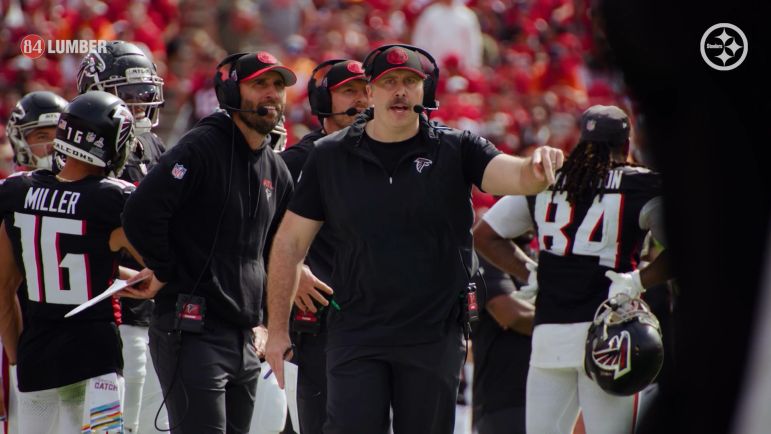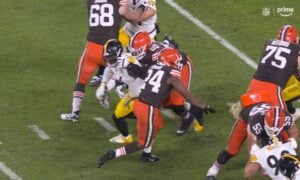Above all else, the Pittsburgh Steelers hired Arthur Smith as their offensive coordinator for two reasons. For one thing, he had the experience their last two coordinators lacked, particularly Matt Canada, his direct predecessor. Moreover, he fits the identity the Steelers want to enforce as a physical team, particularly on the ground.
From their eighth game on, the Steelers were among the most prolific and successful rushing teams last season. They fell just three attempts short of a league-high 326 rushes in that span but ranked higher in yards per carry than the two teams ahead of them. They ranked seventh overall in yards per carry at 4.5 and third in rushing yards at 1,452. Add on top of that the fifth-most rushing touchdowns with 13.
“Arthur Smith could not have landed in a better spot to achieve what he looks to set out and do in the running game”, Sharp Football’s Steelers draft preview reads. As head coach of the Atlanta Falcons, he recorded more rushing attempts last season than almost anybody.
The Falcons rushed for 2,159 yards in 2023 under Smith with 522 attempts, third-most in the NFL. Just a year earlier, Atlanta under Smith recorded 2,718 rushing yards. Of course, as offensive coordinator of the Tennessee Titans, he oversaw Derrick Henry’s 2,000-yard season.
And the Sharp Football team believes the Steelers have a run-game structure that suits Smith’s intentions. They are not the most efficient in the league, but they have good pieces and upside for a better outlook.
“They ranked sixth in yards per carry (4.5 YPC) and fifth in explosive run rate (11.9%), but also 18th in EPA per rush (-0.10) and 15th in success rate (36.6%)”, the preview notes, “due to ranking 18th in the rate of runs that failed to gain yardage (18.3%) and 17th in the rate of runs to result in a first down or touchdown (21.5%)”.
I surmise that all or nearly all of those numbers improve if you isolate them to the second half of the season. That period of time just happens to coincide with Broderick Jones entering the starting lineup. The contrast in numbers before and after is rather start with six games of 150-plus rushing yards out of 10. They were only held to under 100 rushing yards twice in that run—the games started by Mitch Trubisky. Clearly everything was his fault.
The piece notes how the Steelers used Najee Harris and Jaylen Warren in complementary fashion. “The deployment of these two backs carried a lot of weight in how those efficiency metrics shook out”, it reads. “Harris ran against light boxes on just 20.8% of his runs”, while Warren in contrast saw 30.2%. Likewise, Harris faced eight or more defenders 38 percent of the time to Warren’s 24.2. The Steelers rushed the ball on 54.7% of his snaps while they did so on only 36.9% of Warren’s.
“This is a backfield that worked in unison. The way Harris was used made Warren more efficient and vice versa”. Smith can make creative use of the ways in which the two complement each other. At least that’s the working theory before we see it in practice—and in games.








